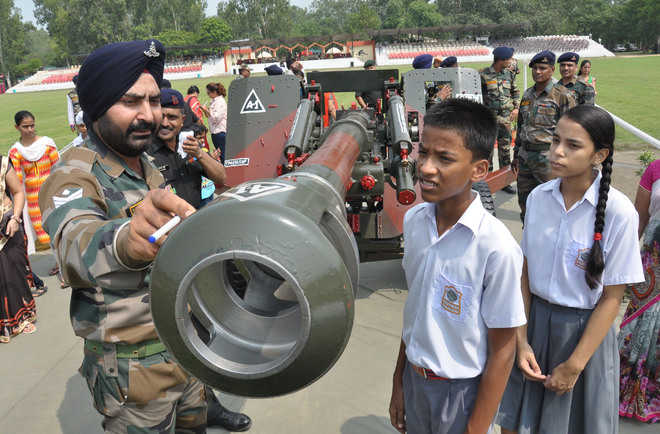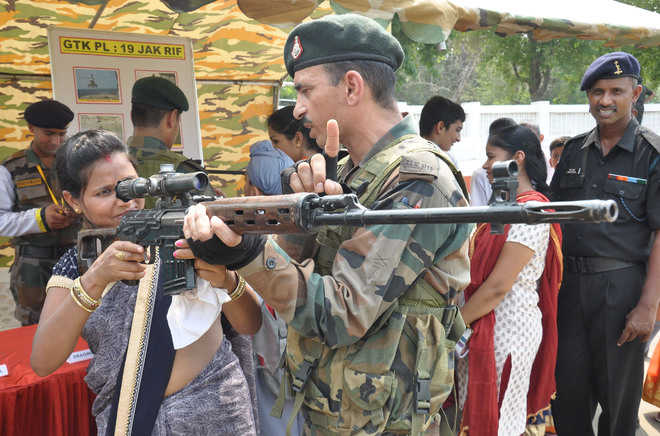GOLDEN MEMORY OF 1948

OLYMPIC GLORY Despite the ravages of Partition, the 1948 hockey team won independent India’s maiden title
From page 01 England, the undisputed hockey champions of the world by virtue of winning the first two Olympic gold medals at London 1908 and Antwerp 1920, developed cold feet when they learned that India had entered the 1928 Amsterdam Games.
 AP■ Balbir Singh scored two of India’s four goals in the 1948 final. India forward Balbir Singh (2R) attempts to score a goal during the London Olympics final vs Great Britain at Wembley Stadium.The English had a close look at the silken-skilled Indians at the Folkestone Hockey Festival just prior to the Olympics and the spectre of humiliation at the hands of a colony prompted the inventors of modern hockey to withdraw and thereby preserve their pride.
AP■ Balbir Singh scored two of India’s four goals in the 1948 final. India forward Balbir Singh (2R) attempts to score a goal during the London Olympics final vs Great Britain at Wembley Stadium.The English had a close look at the silken-skilled Indians at the Folkestone Hockey Festival just prior to the Olympics and the spectre of humiliation at the hands of a colony prompted the inventors of modern hockey to withdraw and thereby preserve their pride.
India went on to win three pre-War Olympic hockey gold medals as the English kept away with pride a huge barrier. But there was no escape when the Olympics came calling in London 1948. They formed the British Hockey Board with four countries to collectively combat India. While their untested rival was pulling all its might, the developing scenario in India was quite opposite — depletion and division. India achieved freedom but it came at a cost — Partition and the exodus of Anglo-Indians, the backbone of its hockey legacy.
Most players came from motley clubs like Brothers (Lahore), Spartan (Rawalpindi), Independents (Delhi), Lusitanians (Mumbai), Youngsters (Lucknow), besides institutions and states. These clubs had players of every creed, region and religion. Partition shook everything up. Hockey players were no exception when a chunk of the population had to abandon property, flee homes and seek new settlements as lives were in disarray.
Undivided Punjab was then the king of Indian hockey. The province held the National Championship, Brothers club, Invitation Cup, Spartan club and Aga Khan Cup. Vast areas of the region had now become Pakistan.
There was a problem hand. The winner’s troph could not be retrieved for n year’s competitions! Only t Aga Khan organisers w lucky. The Maori Shie given to National champio was stuck with the Laho based Punjab Hockey As ciation, never returning India.
Lahore and Lyallp based players like Kesh Dutt and Grahanand Singh were stranded. Th were touring the coun with the Indian Hock Federation (IHF) XI a then Sri Lanka midway
1947 when Partition p cipitated.
Their cities in flames, their families advised them not to return. Stars like AIS Dara, who represented India at the 1936 Berlin Games, Abdul Aziz, Jamshed and others cried out of the next event, the East Africa tour, to avoid being part of an Indian team. People were still migrating, blood was being spilled and princely states were playing truant when it came to joining India (Kashmir, Junagarh and Hyderabad in particular).
The refugee influx and settlement were raging issues when hockey was sought to be kept alive by IHF head Naval Tata. All the good work the IHF had done to prepare for the Olympics until then — the Nationals, trials, new tournaments like Pentangular, national team tour of the country and abroad — came to a naught because of the dissipation of talent. They had to start everything anew and the process earnestly began with the Nationals in early 1948.
Parts of Punjab that remained with India (East Punjab) managed to put together a new team to defend the title in Mumbai, the team being a pale shadow of its past. And it told. East Punjab was eliminated in Round 2 itself. Only five players from the holders featured in the competition. Bhopal took Punjab’s place in the Nationals. They beat Bombay for top honours (1-0). Despite roping in stranded stars like Keshav Dutt, domicile changers Amir Kumar (Punjab) and RS Gentle (Delhi), Bombay failed in the final. Bhopal’s left winger Latif-ur-Rahman, centre-forward Abdul Shakoor, defender Akhtar Hussain were outstanding and couldn’t be overlooked for a strong Indian team.
When the team for London was finalised it looked like any other team of the past — players from every walk, hue, creed and religion were present. Despite communal undercurrents and disharmony that was sweeping the subcontinent, the Indian team was not impacted. It comprised Christians, Hindus, Muslims, Anglo-Indians and Sikhs. Such a merit-oriented team was destined to make history. And London was the setting.
The problem IHF faced was the lack of funds. The requirement was a princely sum of ~3 lakh. Princes, kings, Nawabs, Diwans, Pramukh and the ruling class contributed substantially in the past to Indian hockey campaigns that ended in glory at three Olympics (1928, 1932, 1936). Having lost their clout and influence in the newly independent nation, funds from them were not forthcoming. IHF, meanwhile, decided to send the team by air to circumvent the problem of losing ‘all the gains made in the first ever three-week Mumbai camp in the 20-day travel by ship’.
Costs escalated. Gates, grants and fee from provincial hockey associations, private donations, the Cooperage Ball and other endeavours helped the cause. Every hardship the IHF had, every pain the players endured paid dividends. The combined might of four countries broke Pakistan (in the semis) but fell before India.
Amid full stands at the Wembley Stadium, 70 years ago on this day, it became clear — Indian hockey was class apart, they were true masters of the game they nurtured and modernised.

 Three days later, the team celebrated the first anniversary of India’s independence with unbounded joy lined by Olympic gold.
Three days later, the team celebrated the first anniversary of India’s independence with unbounded joy lined by Olympic gold.
Balbir’s journey from carnage of 1947 to greatness in 1948
That day when our flag was hoisted in front of thousands of Britons at the Wembley Stadium, I realised what independence meant. BALBIR SINGH, winner of three Olympic gold
BBC described Indian hockey’s 1948 London gold as one of the most politically significant episodes in the history of the Olympics. A British colony till a year ago, India defeated Britain on their home turf and saw the Tricolour of the newly-independent nation being hoisted in a country which ruled them for two centuries.
Leaving behind painful memories of Partition that saw massive migration, dividing the subcontinent into two nations (India and Pakistan) on religious lines and sparking large-scale violence which killed millions, the Indian hockey team gave a young nation something to feel proud of on August 12, 1948.
“Though it happened 70 years ago, memories of the London Games are as fresh as it happened yesterday,” recalls the 94-year-old Balbir Singh senior with moist eyes. “As a child I used to ask my father (Dalip Singh Dosanjh), who was a freedom fighter, what independence means and what we would get out of it. He’d reply that independence would give us our own identity, flag and pride forever. That day when our flag was hoisted in front of thousands of Britons at the Wembley, I realised what independence meant. It was the proudest moment for me and for all Indians back home. When the national anthem was played and the flag was going up, I felt that I was flying. I am short of words to describe that glorious moment,” added Balbir, who went on to complete a golden Olympic hat-trick (1948, 1952 and 1956).
PARTITION WOES
The story of independent India’s maiden Olympic gold started from the tragedy of Partition. India lost Lahore, a major hub of hockey, and many great players to Pakistan.
“Siblings Shahzada Sharukh and Shahzada Khurram, who were integral to the Punjab team, decided to stay back in Lahore, giving shelter to many teammates, including Keshav Dutt, and made sure they were escorted safely out of Lahore,” said Balbir.
Both brothers went on to represent Pakistan in London.
“The wound of Partition was so engraved in people’s hearts on both sides that when both teams came across each other during the 1948 opening ceremony, there was hardly any interaction between the players despite many of us playing for the state team just a year ago. There was no warmth.
“This was the impact Partition left and it took time to get out of that. Though with time, things settled down and we toured Pakistan in early 1950s for a Test series,” said Balbir.
“If the 1948 triumph was the greatest day of our lives, the 1947 carnage was the blot on our society. Being a Punjab Police inspector, I was in action then, trying to save people and stop violence. I was posted in Sadar ‘thana’ of Ludhiana and we got calls regarding fires, killings, abductions and loot almost every hour. People were at each other’s throat. There was a mass exodus of population fleeing to Lahore or coming from the other side. Because of the massacre, I stayed away from hockey for months.”
SELECTION CONUNDRUM
Mumbai won the 1948 Nationals and had seven players in the London squad. Initially in the 39-member list of probables for London, no player from Punjab was considered.
“It was only after the intervention of Dickie Carr, who was part of the 1932 Olympic gold medal-winning team, that I got a call after one week of the camp, eventually making it to the 20-member squad,” said Balbir.
THE FINAL
 “When we took the field in the final, the jam-packed stadium was rooting for their team, but as the match went on, impressed with our game, the crowd started cheering us. That was the golden era of Indian hockey and I hope the day will come when we will again rule the world,” said Balbir, who scored the first two goals. Defender Trilochan Singh Bawa and Pat Jansen were the other scorers.
“When we took the field in the final, the jam-packed stadium was rooting for their team, but as the match went on, impressed with our game, the crowd started cheering us. That was the golden era of Indian hockey and I hope the day will come when we will again rule the world,” said Balbir, who scored the first two goals. Defender Trilochan Singh Bawa and Pat Jansen were the other scorers.
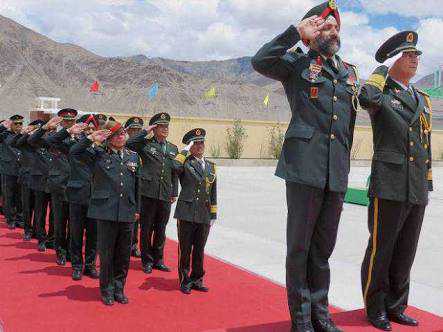


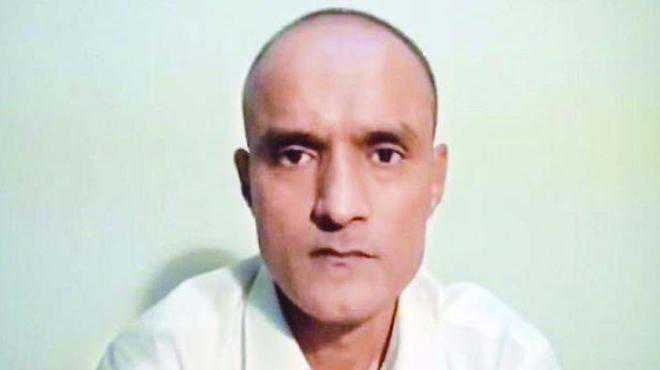

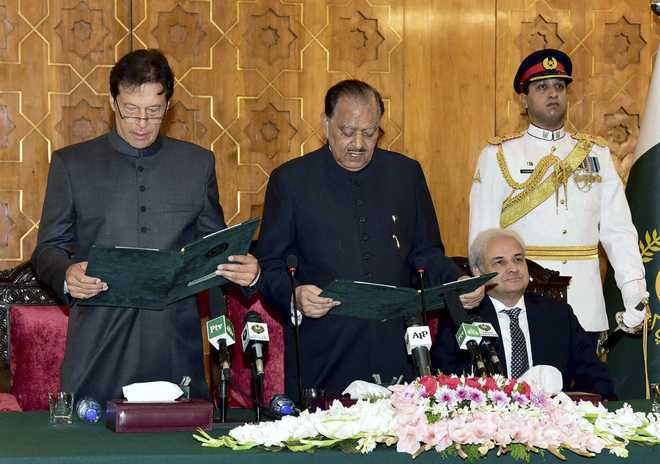
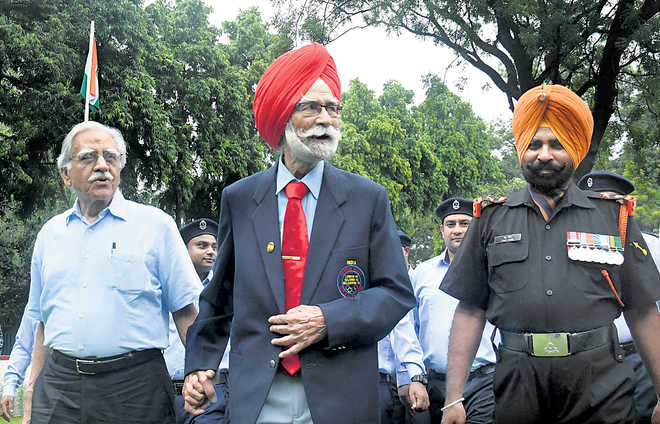

 AP
AP


